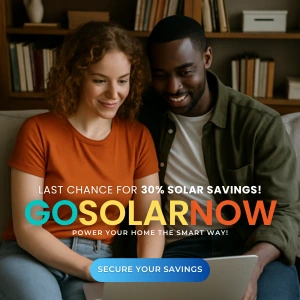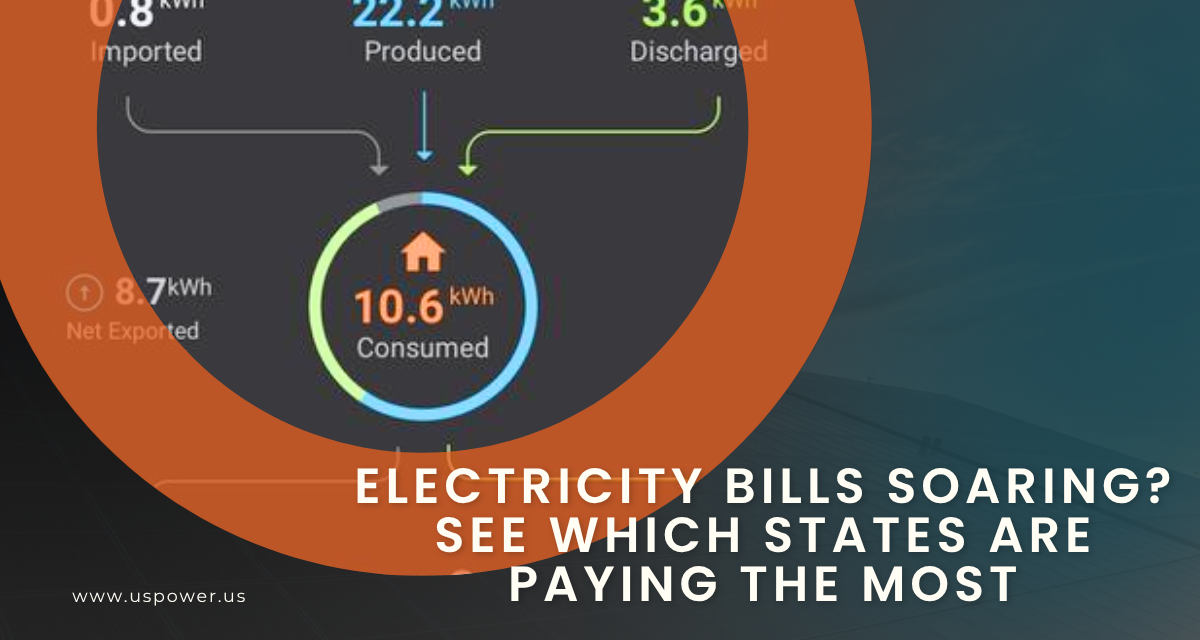Get Solar Approval Fast in California Before Tax Credit Ends

Solar and Roofing Advisor
US Power helps homeowners complete solar interconnection quickly, earn NEM 3.0 credits, and qualify for the 30% federal tax credit before time runs out.

If you’ve been thinking about installing solar panels, now is the best time to act. The federal solar tax credit—officially known as the Residential Clean Energy Credit—remains at 30% until December 31, 2025, after which reductions are expected. Homeowners in Southern California can still save thousands on a high-efficiency solar system, but only if they act before the deadline.
But before your panels start generating power and savings, there’s a crucial step every homeowner must go through—solar interconnection.
What Is Solar Interconnection and Why Does It Matter?
Solar interconnection is the final approval process that connects your home solar system to the utility grid. Once your system passes inspection and is approved by your local utility, you can send excess solar energy back to the grid and take advantage of net energy metering (NEM) credits.
Without interconnection, your solar panels may produce electricity, but you won’t get full credit or compensation for what you generate.
How the Solar Interconnection Process Works in California
The interconnection process can vary depending on your utility provider—such as Southern California Edison (SCE), Los Angeles Department of Water and Power (LADWP), or San Diego Gas & Electric (SDG&E)—but the general steps are the same across the state.
1. Design & System Approval
Once you choose your solar installer, the system is designed according to your roof type, electrical panel, and utility requirements. At US Power, our engineering team ensures that every system design meets or exceeds California’s Title 24 and utility safety standards.
2. Permit Application & Utility Submission
Your solar provider submits applications to your local jurisdiction and utility. This step involves obtaining building and electrical permits and submitting interconnection documents to the utility.
3. System Installation
Your system is installed using American-made Qcells panels, known for their superior performance in California’s sunny climate. US Power offers these panels at factory-direct pricing through our exclusive partnership with Qcells USA—ensuring higher value and guaranteed long-term performance.
4. Inspection & Utility Review
After installation, the system undergoes inspection by the local building department and then by your utility provider. Once approved, you’ll receive the Permission to Operate (PTO)—your green light to start producing energy and receiving credits under California’s NEM 3.0 policy.
How Long Does Solar Interconnection Take?
The process typically takes 2–6 weeks after installation, depending on utility response times and inspection schedules.
- LADWP: Usually 2–3 weeks for approval.
- SCE: Can take 4–6 weeks during high-volume periods.
- SDG&E: Around 3–5 weeks on average.
To speed things up, US Power coordinates directly with utilities to ensure all applications and permits are submitted correctly the first time—so homeowners avoid unnecessary delays.
Why Interconnection Is Critical for Your Solar Savings
If you don’t complete interconnection, you can’t legally export power to the grid or earn net-metering credits. In California, those credits help offset nighttime or cloudy-day usage—meaning thousands in lifetime savings.
Proper interconnection also protects you from compliance issues. Utilities must confirm your system meets safety and anti-islanding standards (which prevent your solar array from back-feeding electricity during outages).
Understanding California’s NEM 3.0 and Why It Matters
Under Net Energy Metering 3.0 (NEM 3.0), which took effect in 2023, new solar customers earn credits based on the hourly market value of electricity, instead of the retail rate. While this reduces credit value compared to older programs, pairing solar with battery storage helps homeowners maximize savings by storing power when rates are low and using it when rates spike.
At US Power, we offer integrated Qcells solar batteries that qualify for the same 30% federal tax credit—making it easier to stay energy-independent and future-proof your home.
Why Homeowners Should Act Before the 2025 Deadline
The 30% Federal Solar Tax Credit is scheduled to remain at its full value through December 31, 2025, after which Congress could reduce or phase it out for residential systems. Homeowners must have their system installed and operational by the deadline to qualify.
Incentive extensions are never guaranteed, and with the high volume of solar installations expected in 2025, interconnection timelines could lengthen significantly—so starting early ensures you lock in the full credit.
Why Choose US Power for Solar Installation
US Power is a trusted local installer serving Sherman Oaks and all of Southern California. Here’s why more homeowners choose us:
✅ Exclusive Qcells Partnership – Factory-direct, American-made panels for long-term reliability.
✅ Turnkey Project Management – We handle design, permitting, interconnection, and inspection.
✅ Battery Storage Experts – Integrate solar + battery for 24/7 energy security.
✅ Local Knowledge – Deep experience with SCE, LADWP, and local permitting agencies.
We simplify the process so you can focus on what matters—lower bills, cleaner energy, and long-term savings.
Interconnection Is the Key to Unlocking Solar Savings
Solar interconnection isn’t just a technical step—it’s the final gateway to start saving money with solar energy. Completing it properly ensures you benefit from net-metering, qualify for the 30% tax credit, and keep your system compliant with California’s grid requirements.
Don’t wait until the last-minute installation rush before the 2025 deadline. Start your solar journey today with US Power—and take advantage of exclusive Qcells pricing, professional installation, and full interconnection support.
Ready to Get Started? Schedule a free solar consultation today and see how much you can save before the 30% tax credit expires.
Frequently Asked Questions
Related Articles
Our Related Blogs
Find out how California compares and how solar helps beat utility rate hikes.
Restore lost energy and protect your solar investment with QCells through US Power.
Yes, but act fast—deadline is December 31, 2025, for full 30% solar tax credit.








We empower communities and businesses to harness clean, renewable solar energy solutions that drive sustainable growth.
Ready to Own Your Power? Call us today!
818-650-8010
Copyright © 2025 US Power - Axia by QCells. All Rights Reserved.
Privacy is important to us, so you have the option of disabling certain types of storage that may not be necessary for the basic functioning of the website. Blocking categories may impact your experience on the website.
Essential
These items are required to enable basic website functionality.
Personalization
These items allow the website to remember choices you make (such as your user name, language, or the region you are in) and provide enhanced, more personal features.
Marketing
These items are used to deliver advertising that is more relevant to you and your interests.
Analytics
These items help the website operator understand how its website performs, how visitors interact with the site, and whether there may be technical issues.
We and our third-party partners use cookies and other technologies to enhance and track your experience on this site, conduct analytics, and personalize marketing to you. By using the site, you agree to our use of these technologies, including recording and monitoring your interactions with the site.
Get an instant solar estimate using satellite!









